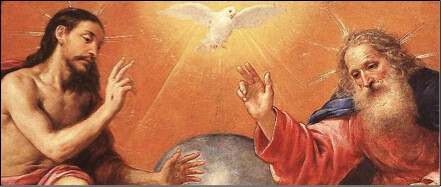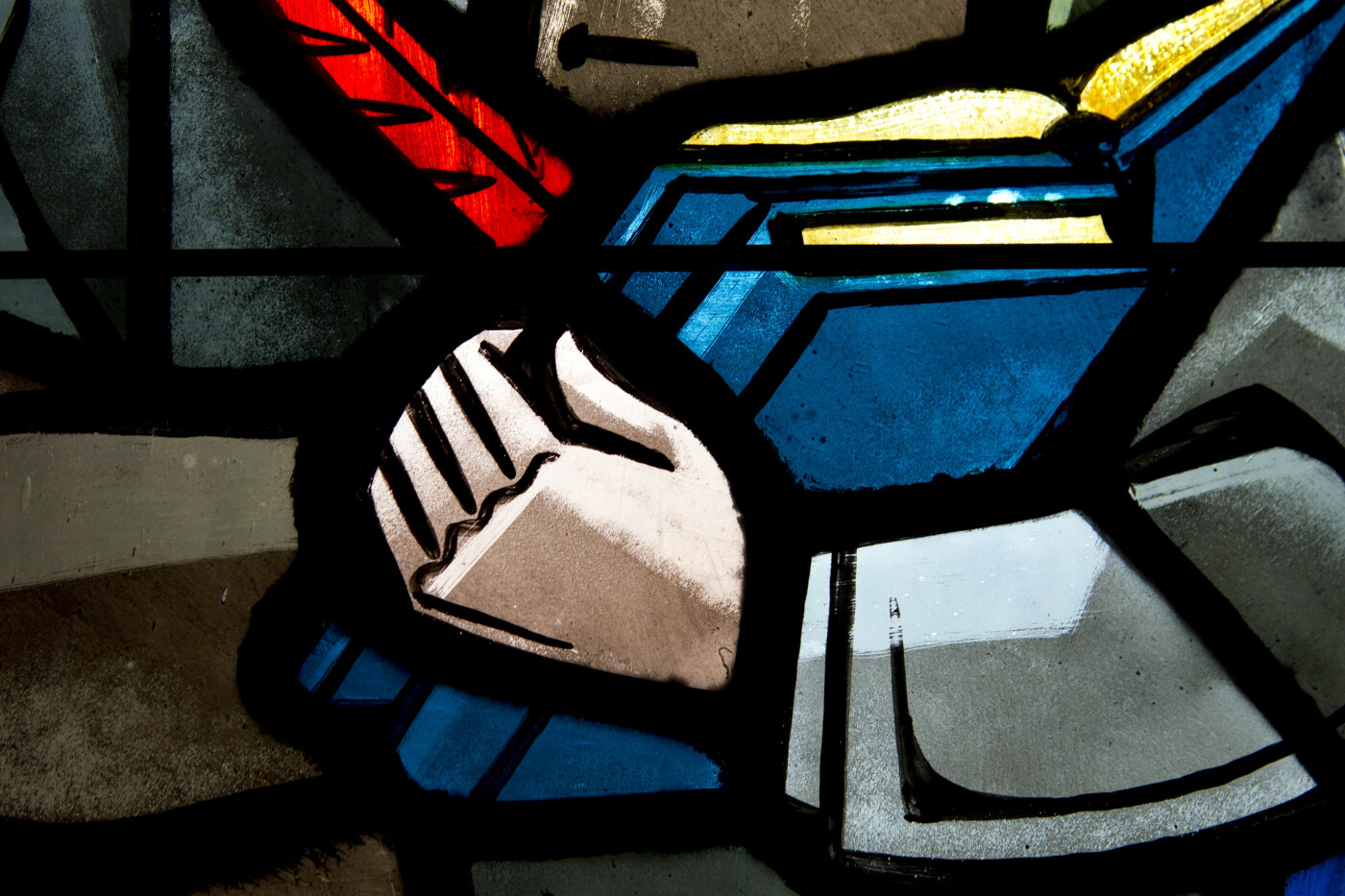What is the Holy Trinity?
A Google-image search for “holy trinity” yields all kinds of craziness. But even the more sedate and traditional representations risk misunderstanding. When we think about the Trinity, we need to note first that the Trinity is NOT this:

(Antonio de Pereda y Salgado - The Holy Trinity; licensed for reuse from Wikimedia Commons)
Some will consider this caution redundant or unnecessary, but no one picks up good theology merely by osmosis; and many church people do not know our theology nearly as well as they let on. Where once viewers understood that representations such as Salgado’s The Holy Trinity are symbolic iconography, now we tend to expect pictures to represent physical realism. The growth of digital and virtual realities has made the coming generations more reliant upon visual information rather than less. People are expecting, when they visit churches, that what they see in the windows and on the walls is what Christians actually mean. Unless they are very well instructed, people today see a picture such as Salgado’s and think that this is what Christians believe their god looks like. In this context, it is imperative that Christians repeat often and emphatically that God is NOT an old white man with a long white beard (Num. 23:19). Reader, if that is your image of God, as so many artists have depicted Him, please know you are thinking of Santa Clause, not the God of the Bible. Maybe Christians of the past did not need to make this caution explicit; maybe they should have but neglected to. Regardless, in the real world of 21st century America, the church must not lose a single opportunity to proclaim repeatedly in the public square with a loud voice that God is NOT an old white man with a long white beard.
So if God is NOT an old white man with a long white beard, as depicted here, what is He? Is He a He at all? Just how much like a human person is this divine being? Jesus’ own answer is that God does not have a body. God is spirit (John 4:24), not flesh. So God exists beyond any bodily existence humanity can experience. That means God is neither male nor female (another truth that bears constant repetition, and which churches cannot count on communicating by default) but is the source of all genderedness, since both human genders are made in God’s image (Gen. 1:27). While both genders are sufficient in their common humanity to image God, neither is sufficient in its genderedness to present the image of God alone. God alone is good, but “it is not good for man to be alone.” (Gen. 2:18)
This has implications for church language about God: if God includes but exists beyond masculinity and femininity, why do we use male-gendered language for God? Isn’t it just as correct to call God “she”? We should say, rather, that it is just as incorrect to use feminine pronouns for God – limiting God to either gender or conceiving of him as a neutered, impersonal force brings us no nearer the truth. Instead, we rely upon the Bible’s norms, particularly the norms Jesus used when speaking about God. It is safer for us to follow the Biblical norms than to create our own; at least until we reach glory and can understand better how to use the finite tool of human language to express the infinite Divine. But that means we must repeat the caution in our churches over and over, never assuming that people have already understood it, that though we use masculine language for God, we do not mean to imply thereby that God is male. God is NOT an old white man with a long white beard.
People do not seem to have quite the same problem with symbolism of the Holy Spirit as they do with symbolism around God the Father. Still, it is important to say aloud in our churches that the Spirit is not a bird; that the bird in images such as Salgado’s is a symbol pointing to the story of Jesus’ baptism and the reality of our own experience with the Spirit through the sacraments. The Holy Spirit is just that – spirit, the Spirit of God, the means of God’s presence in believers and in the world. The same rules about gendered language apply to the Spirit: it is appropriate to use masculine gendered pronouns for the Spirit because that is how Jesus speaks of him (John 14:17 and other places; the Greek pronouns for the Spirit are always masculine). It is not appropriate to think of the Spirit as feminine or as an impersonal “it,” because both of those approaches limit God in a place where God is limitless.
Pictures of the Trinity, like language about the Trinity, always face the compelling challenge of how to express the infinite glory of the unlimited Godhead through limited tools such as paint and canvas? Every picture, icon, treatise, or sermon about the Trinity wrestles with the same problem: we simply do not have the tools to image God well. There is only one place where we may approach God without being harassed by the inexpressible mystery of the Godhead: it is in Christ Jesus Himself. Jesus is the eternally existing (John 1:2) second person of the Trinity – the “Son” and “Word” of God (John 1:1). He is fully God (Phil. 2:6) yet not identical to the Father or the Spirit. He is the perfect icon of God (Col. 1:15), the perfect expression of God in human nature and form, and his language about God is trustworthy. Even though his humanness is masculine, the 2nd person of the Trinity is fully God, so even in Jesus God is not limited to one gender but still exists inclusive of and beyond gender. In Jesus’ humanity, God has a mother, a family, a people, a homeland, a place in time and space: not in a way that limits his care but in a way that uses these human specifics to work out the salvation of the entire world. All human limitation is overcome and taken up into the unlimited Godhead through Jesus’ incarnation, and the inexpressible mystery of God is expressed faithfully to us in Jesus’ person, teachings, example, and saving work.
So what is the Trinity? The easiest way to see it is to ignore all the results of that Google-image search and to read the Gospels. The simple fact of Jesus points us to everything we need to know. Yes, God is One; and that One God is a trinity of persons: Father, Son, and Holy Spirit. We know this not because of any picture or sermon or biblical proof-text, but because one of those persons - Jesus, the Son of God – came to earth and told us so; and then he proved his divine credibility by rising from the dead (Rom. 1:4).


